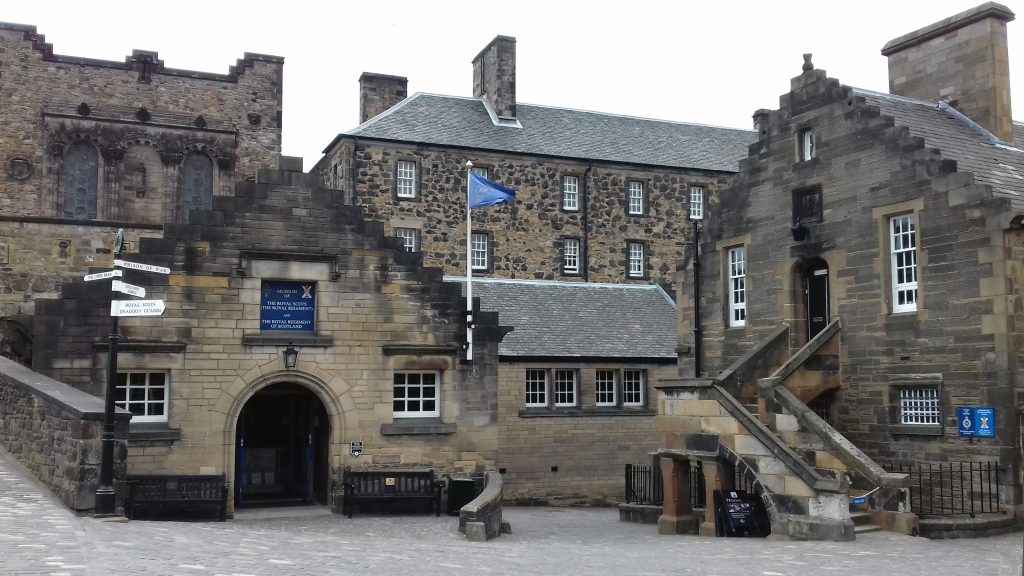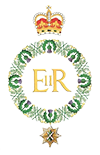Welcome to
The Regimental Museum

The Regimental Museum is on the left with, up the steps on the right, the Museum Office, Library and Research Facilities

Why not visit our Museum and History, 14 videos with audio by clicking here
On entering the Museum, after being introduced to the Regiment by a modern piper, the visitor turns to the left and is immediately taken back nearly four hundred years to the raising of the Regiment by Sir John Hepburn in 1633. There follows an account of the Regiment’s activities up to the present day. If using the Castle Audio Guide further information on the Museum can be found at number 9.
A verbal and visual tour of the Museum can be downloaded from our apps.
“At the invitation of the Trustees of the Royal Scots Museum Trust, The Royal Regiment of Scotland, the youngest Scottish Regiment formed on 28 March 2006, established a museum alongside that of The Royal Scots (The Royal Regiment), the oldest regiment in the British Army, to continue the story of the Scottish infantry.”
MUSEUM AND HERITAGE
This section of the Regimental Web Site divides into two parts, detailed below, which, although separate, are linked closely in much of their content. They, in turn, are supported by a section of 'Further Reading'.
Although the Regiment, with its merger in 2006 into The Royal Regiment of Scotland, officially ceased as an active unit of the British Army after 373 years of loyal service to Sovereign and Country, its history, heritage and the commemoration of key events has continued to live on through the Regimental Museum and its associated activities. The physical aspects, represented in the Museum itself, with its own Committee, have continued to be updated in such areas as improved lighting, signage and storage, together with new displays covering the 'Waterloo' Colours and post-1945.
Project 373
In late 2016, however, with the approach of the National commemorative activities associated with the Centenary of the end of World War 1, together with the 75th anniversaries of VE and VJ Days, gaps were identified amongst some of the less physical presentation of aspects of our Heritage over this major and key period of our more recent history which it was felt should be suitably marked. Examples included, in 2019 the 100th anniversary of the return of the 10th Battalion from Northern Russia; in 2020 the 80th of the last stand of the 1st Battalion at Le Paradis and the 50th of the first Northern Ireland deployment; in 2021 the 30th of the Gulf War and in 2022 the 80th of the sinking of the Lisbon Maru.
A small but dedicated team of volunteers assembled under the title RS373 to tackle the above opportunities, recognising that the Regiment's heritage is much more than just the physical objects and documents displayed or held in the Museum. The purpose of RS373 was, and continues to be, the virtualisation of our 373 years through maximizing the use of modern technology, allowing it to be accessed through www from anywhere in the world. This transformational activity, which has included capturing the memories of a dwindling band of Regimental veterans from World War 2 and post-1945 on film; QR codes around the Museum together with a comprehensive audio-visual tour; the production of interactive Rolls of Honour of all Royal Scots who gave their lives in the two World Wars, and on operations in the interwar and post-1945 years; and the major upgrade of the Regimental web site. Team RS373 has been supported throughout by the Computer Science Department of the University of St Andrews (Scotland's oldest University working with Scotland's oldest Regiment) and Hot Aches Productions.
1.The Museum - This tells you how to find us in Edinburgh Castle then takes you on a short video tour through the Museum. There follows a set of twelve slide shows, each one covering a particular period in our History, providing a comprehensive audio-visual tour through the Museum. Individual slide shows can be entered and left at any point that a visitor wishes and the inclusion of the audio is optional. Whilst primarily aimed at those unable to physically visit the Museum for whatever reason, we hope they might both serve to whet a visitor's appetite before they visit or provide a further experience for those who wish to follow-up on a visit.
2. Heritage - This covers, in considerable detail, the 373 years of our Regimental History, supported by a number essays, in particular on the two World Wars and post-1945. Central to the coverage of those two periods are the Rolls of Honour listing all those from the Regiment who were killed on active service or died in operational theatres from 1914-2010, accessed through the Museums & Heritage index; and two films where veterans of World War 2 and post-1945, and their families, talk of their experiences and memories. These films can be accessed direct through the 'Soldiers' Stories' to the right. Those seeking information on some less obvious area of our Regiment's story should visit the 'Further Reading' section where, amongst other subjects, they will find articles covering The Colours and Battle Honours; Awards of VCs and the GC; Regimental Monuments and Memorials across the World; Regimental Silver, the Regimental Church and Regimental Music.


